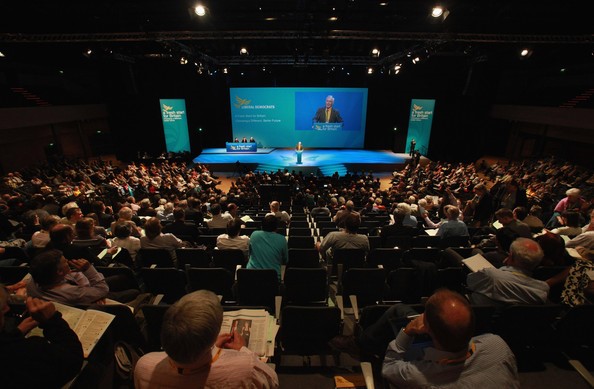
Blog by officers attending from Sheffield City Council
Intro
John
Three of us from Sheffield City Council had a day out at this conference in June. We are Shahid Khan, Engagement & Development Officer, Waleed Al-Gulaidi, Community Engagement Apprentice, and John Loveless, Manager of the Community Engagement Team.
We met Barbara Spicer, Chief Executive of Plus Dane and Joint Chair of the event. Barbara tweeted a photo of us with her and Maria Milford, the other Joint Chair, and asked us to write a blog of our day, so here goes.
Barbara told us the story of her career starting off as the girl who made the tea for a Director who she later sat alongside as a fellow Director, which was a real inspiration to Waleed.
Waleed
Today was a brilliant day at the conference Resident Involvement in York. It was my best experience within the working world and I feel I have gained a lot from attending
Morning
Waleed
At the start there were 7 different representatives from different housing associations who told us about their business and how they cooperate. There was a debate afterwards between the panel and the audience about stigma and how this affects housing, I found this really interesting because it gave me a better understanding of what it is and how this affects tenants and residents till this day, even though it started over 50 years ago.
John
First impressions of the hotel were that it was very smart and of course very convenient to access, being almost a physical part of York train station. There was a bit of a problem with the coffee machine but we soon forgot about that as Barbara introduced the day and the interesting and varied panel of speakers for the morning session.
We especially warmed to the words from Melanie Rees about stigma in social housing and how we tackle it. Building more social housing, promoting social housing tenancies as a tenure of choice and training staff in understanding stigma, were some of the positive suggestions. From the floor someone said “Stigma starts with how and where properties are designed, planned and built,” which we totally agreed with.
The last part of the morning was billed as an interactive session with the audience, and Shahid, Waleed and I joined with tenants and a manager from the Community Housing Group to talk about what we could do to reduce stigma in social housing. Each table fed back to the whole room on a range of different topics.
Lunch
Waleed
During lunch we met the lovely chief executive Barbara Spicer of Plus Dane Housing who was one of the main organisers of the event, she spoke to us about her career and how she moved up the ladder, I found this really interesting as she taught me you can become what you want if you work hard enough. This really motivated and inspired me especially knowing she was once at my level and knowing everybody has to start somewhere.
Afternoon workshops
Waleed
After lunch there was various workshops set up, the first one I attended was ‘Achieving Impact in Resident Engagement at Local Authorities’ and was run by Leeds Council, this was really good because we gained ideas that could help our council, for example having electrical billboards around the city about housing news, updated regularly so tenants and residents are aware of what is happening, walkabouts with the tenants to engage with them and annual home visits etc. We have taken these ideas with us and are hoping we can apply them to our housing service in order to improve the service for our tenants and residents.
John
I learned a lot from the South Liverpool Homes run workshop about their successful scrutiny panel. I especially liked their recognition of the importance of the culture of the panel, investing in training in the code of conduct and approaching people who have made complaints about services to see if they would be interested in joining the panel.
Waleed
The second workshop was ‘Residents Collaborating on Inclusivity’, Lucy Malarkey’s presentation was absolutely fantastic, she had spoken of the company’s downfall and upcoming which showed clear motivation and taught us no matter how many times you fail, you have try over again. Lucy was talking to us about LGBT and also talked a lot about equality, diversity and inclusion which allowed us to see the wider picture. She showed us the training she did with both customers and staff so that they have a clear understanding of how to deal with one and other, I think that this was an excellent idea and could actually be useful within Sheffield City Council. They showed us organisations they collaborated with, for example BME which gave them a good image in the eyes of the public, this is also something other housing associations should think of.
Also, after this workshop Shaheed was able to find them on Facebook and take their email down to help get in touch and promote each other online which will benefit both organisations. We were really amazed by how successful their company has become and what they have done, it is a really good image for their community. We are hoping to do the same.
John
In the other workshops I attended, run by Great Places and Yorkshire Housing, I was heartened to hear that other organisations are grappling with the issue of how to reach out to customers / tenants who want to be involved but do not want to come to meetings and that paper copies of documents are still available for those who have not yet migrated to digital communications.
Final thoughts
Waleed
Overall it was a fantastic experience and hopefully I am able to attend another, we learnt a lot of information, we gained different peoples’ opinions, I got the chance to meet people from different housing organisations and finally we got the chance to see how housing associations are successful and what they did, hopefully we can take this information on board to help our housing services be the best it can for our tenants.
John
This was a rare day out of the office for all three of us, but rewarding and thought-provoking. We came away with some really useful ideas and challenges to take back to Sheffield and to the groups we work with, and we met some really friendly and interesting folks from other housing providers.








